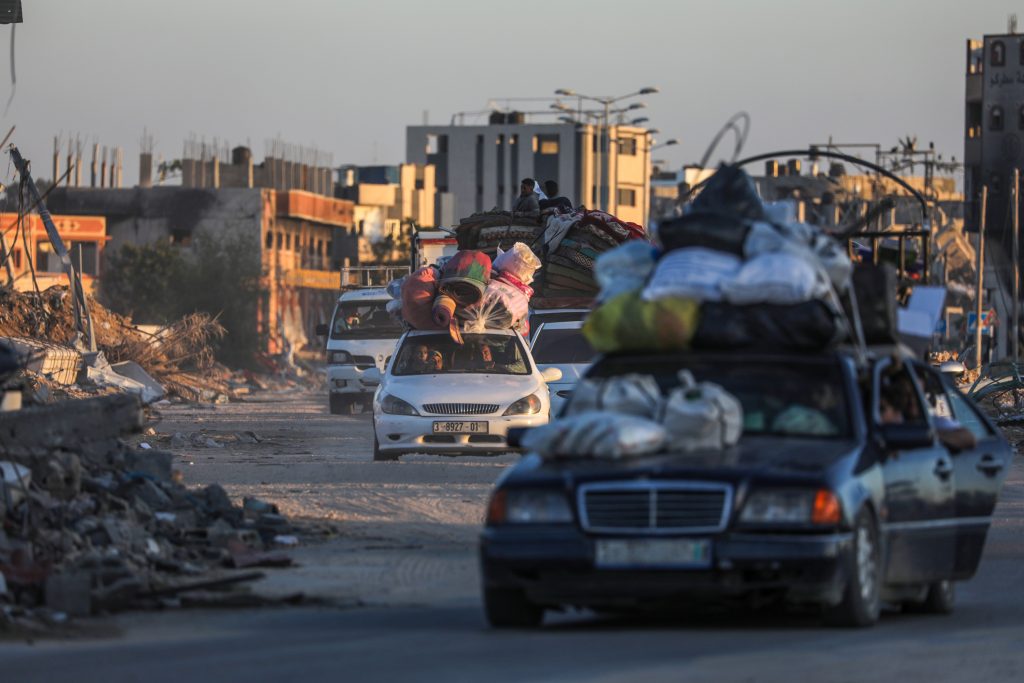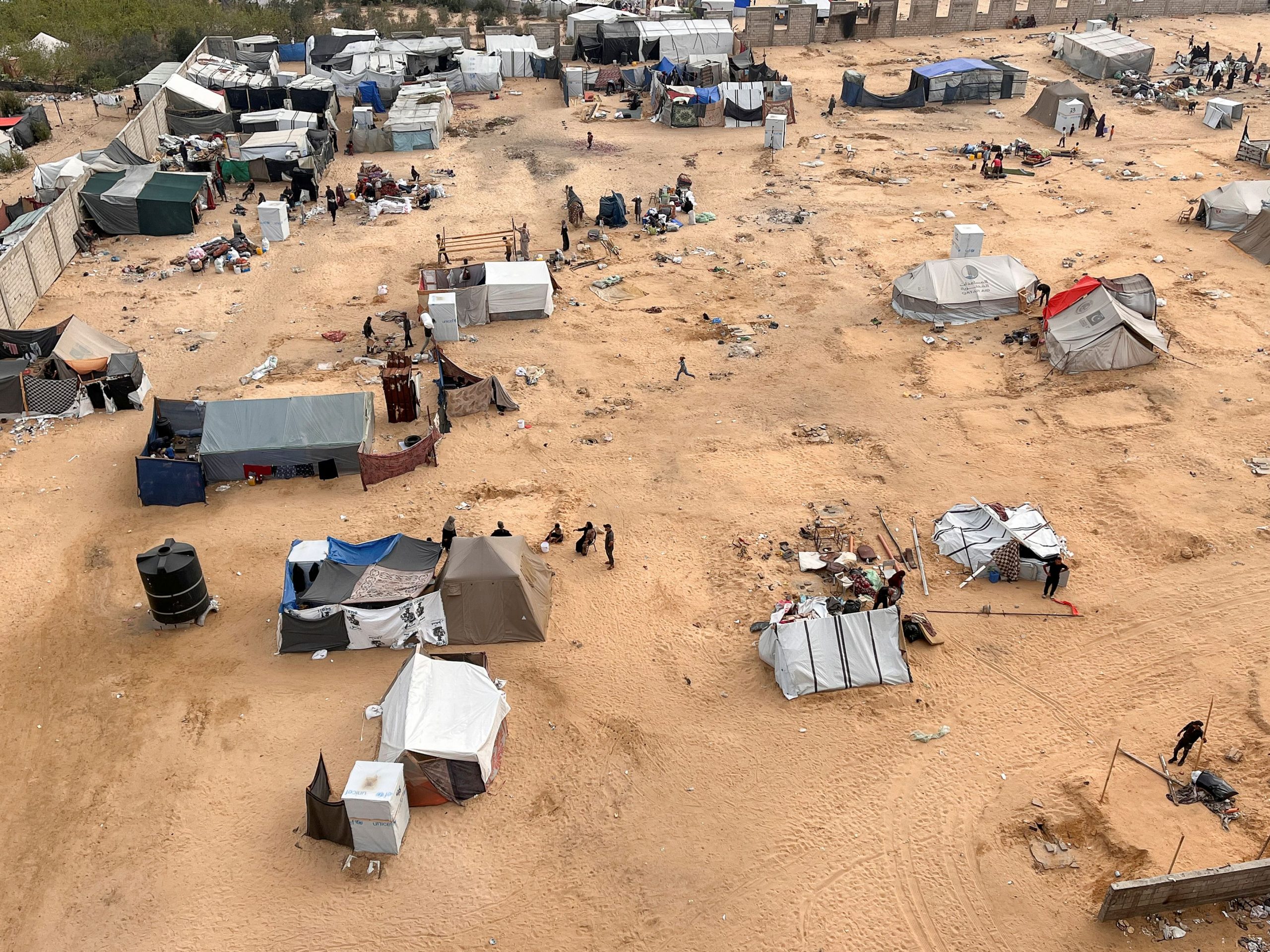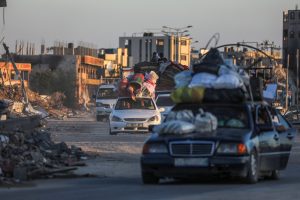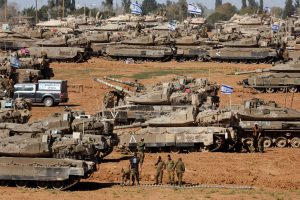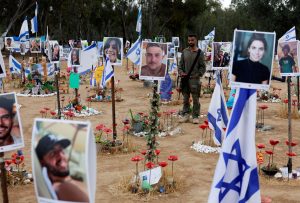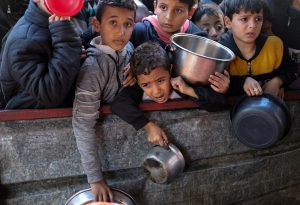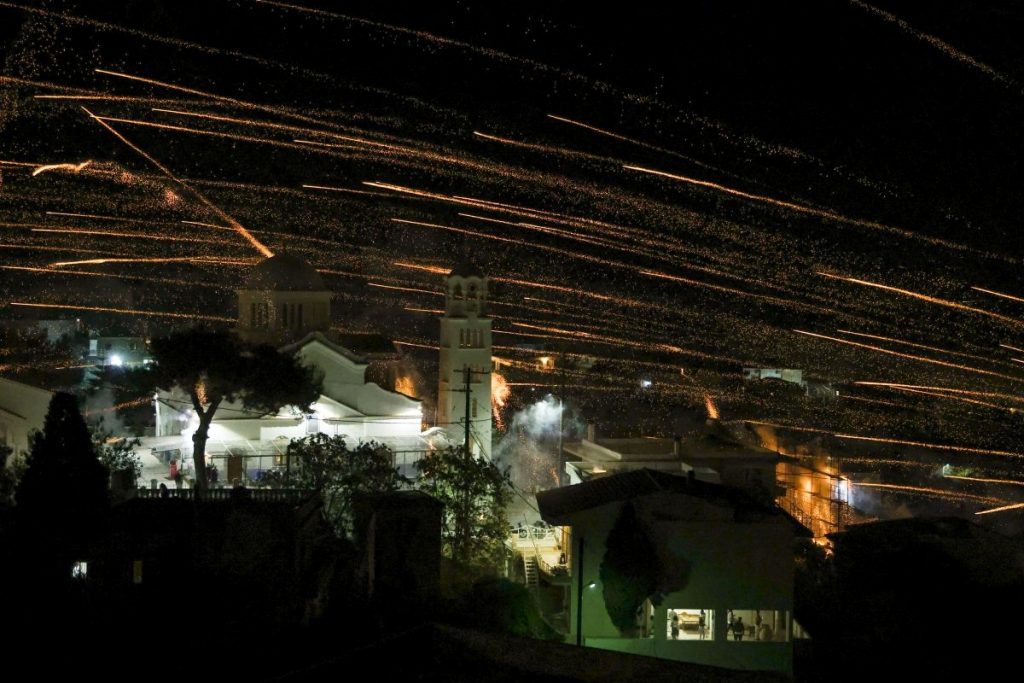As Israeli military fliers rained down on eastern Rafah early this week warning residents to evacuate ahead of a military operation , Kareem Jouda and his family resolved to stay put even as their neighbors fled. They felt they had nowhere to go.
The bombing changed their minds. The 28-year-old lawyer and his family left Thursday, joining a mass movement out of Rafah. The United Nations estimates over 100,000 people have fled.
The chaotic movement of so many civilians carries big risks for Israel’s relationship with the U.S., its most important ally. The Biden administration has repeatedly expressed concerns about a military operation in Rafah, citing the difficulty of moving civilians out of harm’s way in such a crowded urban environment. In its clearest rebuke of Israel’s plans, the administration said this week it has halted a shipment of bombs to Israel, hoping to get it to rethink the operation as it masses tanks and troops on the outskirts of Rafah.
Israel has said its incursion into the Rafah area has been surgical and precise. Even so, it has hit more than 100 targets over the past few days with airstrikes, artillery and tank fire , seized the key crossing to Egypt and effectively cut the city in half along a main road.
In eastern Rafah, residents are leaving, even though the prices of tents, gasoline and rides have soared. The nearby evacuation zone of Al-Mawasi, a barren stretch of beach lacking any basic infrastructure, has filled up.
Jouda and his family were the last in their neighborhood to head out. He said they couldn’t find space in Al-Mawasi, so they paid a driver $800 to drive them farther north to Nuseirat, where they have a house.
“I’m not sure we made the right decision, but no one really knows what the right decision is,” he said. “Bombing is everywhere.”
On Friday, the Israeli military said it was continuing to attack groups of militants in eastern Rafah in close-quarters combat and with airstrikes, as it has for the past several days. Targets included sites around Rafah from which rockets had been fired into Israel, including around the Kerem Shalom crossing from the Gaza Strip into Israel, the military said. Earlier in the week, Israeli troops backed by tanks seized control of the Gaza side of the Rafah border crossing with Egypt.
Israel’s leaders have said the military needs to move into Rafah to dismantle the remaining battalions of Hamas, the militant group that led the Oct. 7 attacks on Israel, which left 1,200 dead and more than 240 as hostages, according to Israeli authorities.
The Israeli military on Saturday issued evacuation orders for additional portions of eastern Rafah, expanding its operation in the border city.
Israel also stepped up operations in northern Gaza, ordering people to leave parts of Jabalia, as cease-fire talks that would return some Palestinians to the northern part of the enclave falter. Israel launched air strikes in Jabalia on Saturday evening, and began ground raids in nearby Beit Hanoun and Beit Lahiya, the military said.
Israel has expanded and contracted its operations in northern Gaza since beginning troop drawdowns and pivoting its focus toward southern Gaza some months prior. The military said it was scaling up combat in the north in response to Hamas reestablishing its presence in the area. Analysts say that the operations are part of Israel’s long-held strategy to conduct missions to clamp down on Hamas reasserting authority, but pointed to the weakness of such a strategy, as Israel has already repeatedly returned to clear out militants in previously conquered areas in the absence of any replacement authority for a post-Hamas Gaza.
Israeli leaders have said the threat of an operation gives them leverage in ongoing negotiations for a cease-fire deal that would trade a pause in the fighting for the return of some of the 128 Israeli hostages still held by Hamas. Those talks have yet to bear fruit.
As Israel pressed its military operation in Rafah, Arab mediators pushed to narrow the gaps between the two sides over a possible cease-fire deal, with negotiators expected to reconvene in Cairo or Doha early next week, Egyptian officials said.
Satellite imagery from Planet Labs has shown Israel military vehicles massed near Kerem Shalom, and other photographs have shown Israeli tanks gathered near the Gaza border area.
The Kerem Shalom and Rafah crossings are vital to aid deliveries across Gaza, which haven’t been made in days, leading humanitarian agencies to warn of imminent risks to lives and well-being. Volker Türk , the U.N.’s top human-rights official, called the evacuation efforts inhumane and urged Israel to halt its attacks in Rafah, the nucleus of humanitarian aid operations for the entire strip.
Israeli military spokesman Peter Lerner said on CNN that the military had put its own forces at risk when it told people to evacuate ahead of time, losing the element of surprise. Nevertheless, he said, it would continue to make such pre-operation announcements to protect civilians.
“We didn’t start the operation until we had seen the evacuation had commenced,” he said.
The fighting hasn’t been as intense as in earlier stages of the war —which has killed more than 34,000 in Gaza, according to Palestinian authorities—but the frequent strikes and constant whir of drones overhead has unnerved residents.
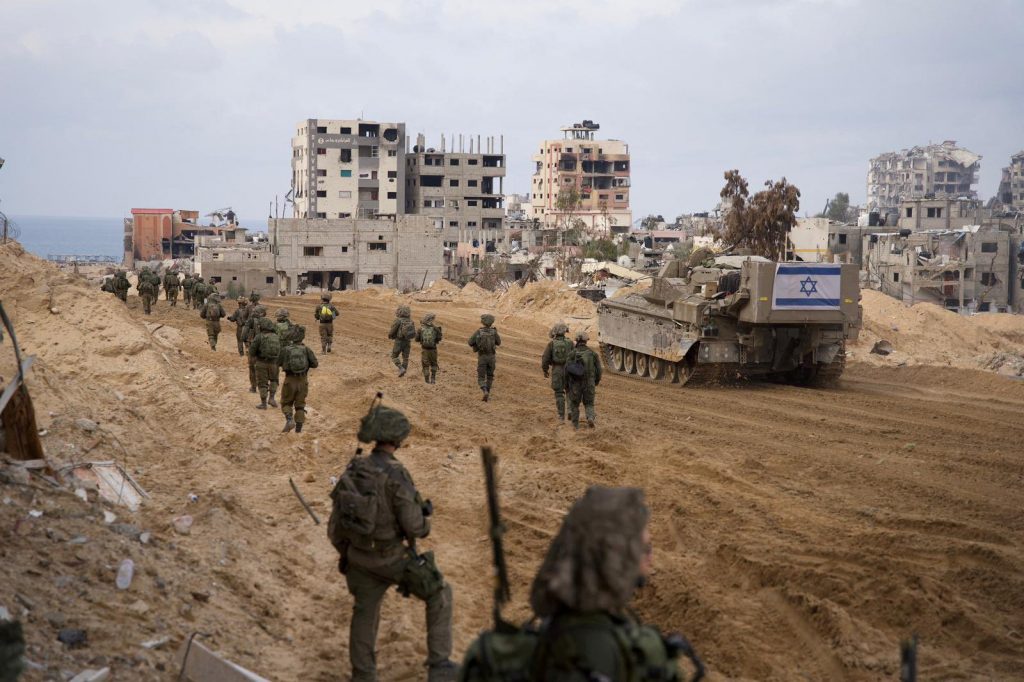
Israeli soldiers operate in the Gaza Strip amid the ongoing conflict between Israel and the Palestinian Islamist group Hamas, in this handout picture released on January 2, 2024. Israel Defense Forces/Handout via REUTERS
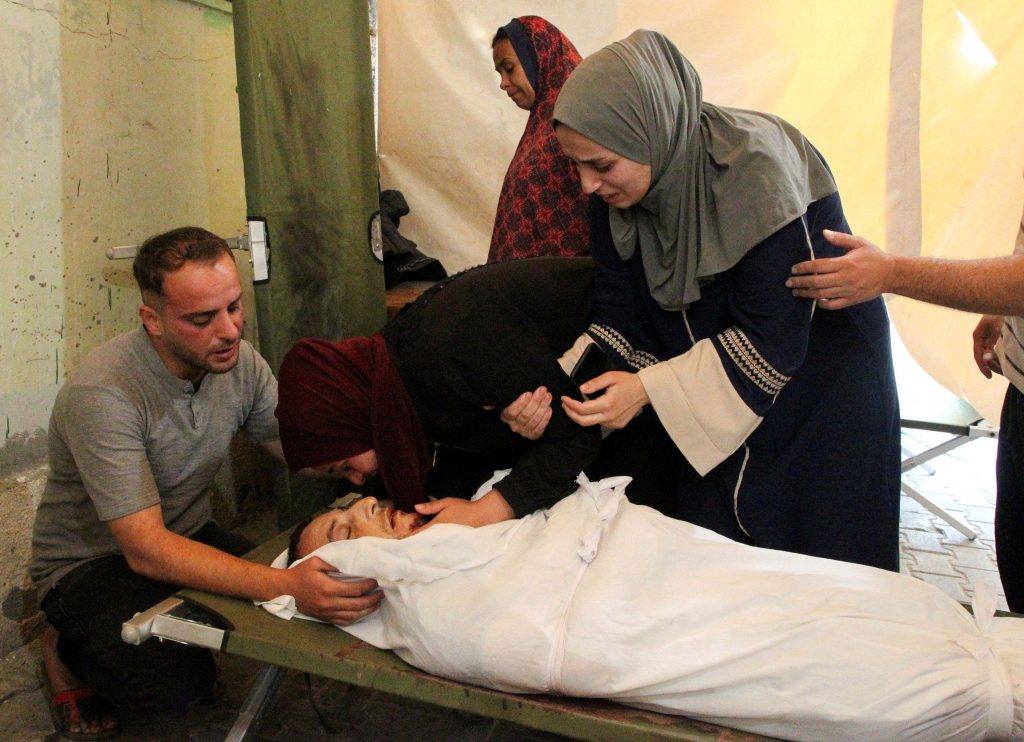
At a Rafah hospital, family members mourned Friday over those killed during a bombardment of the Gaza Strip.
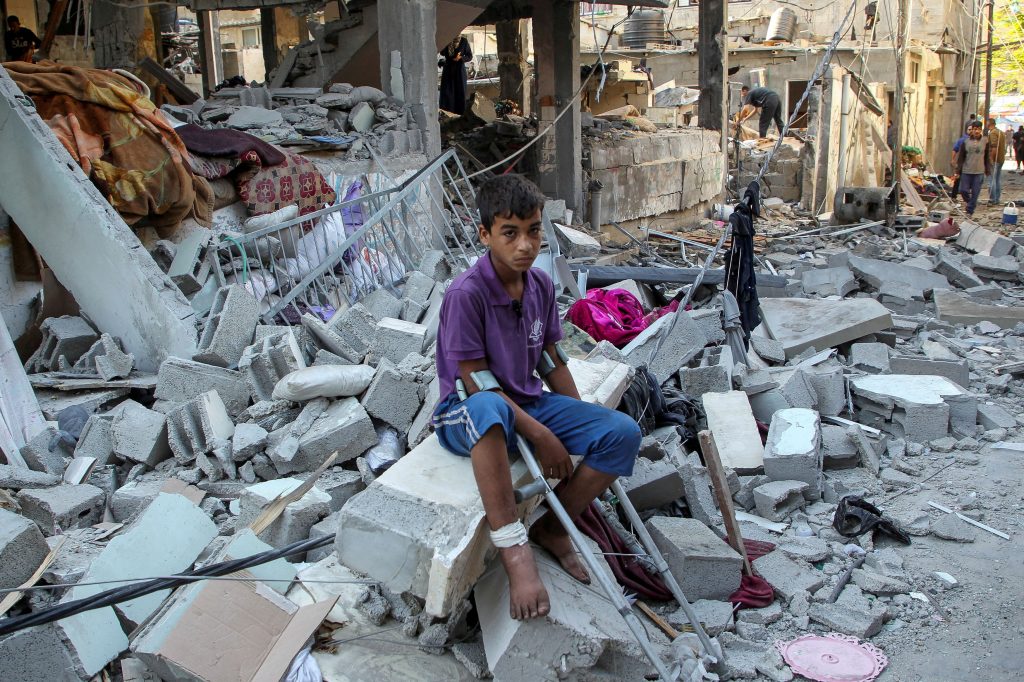
FILE PHOTO: A wounded Palestinian sits on debris at the site of an Israeli strike on a house, amid the ongoing conflict between Israel and the Palestinian Islamist group Hamas, in Rafah, in the southern Gaza Strip May 9, 2024. REUTERS/Hatem Khaled/File Photo
Mohammad Abu Taha, a Palestinian Authority employee, had already been displaced from his home in Gaza City earlier in the war when he fled Rafah on Wednesday to settle with relatives in the battered city of Khan Younis , about 6 miles to the northeast.
He was back at his house in eastern Rafah on Thursday looking for a radio so he could keep track of the cease-fire talks. On a video call with The Wall Street Journal, he showed the area around his home, marked by the broken barrels of water and plastic bags and wide empty spaces left by those who had evacuated.
“See, you can tell it’s a ghost city,” he said, “Almost no one is left.”
During the call, the buzzing of drones and the thud of shelling could be heard. Abu Taha clutched his radio.
“I hope to hear good news soon,” he said before hanging up and heading back to Khan Younis.
As civilians poured out of Rafah, their wealth determined how far they would go. Those with means ferried their goods as far north as possible in cars, donkey carts or trailers. The cost of vehicle transport from Rafah to Al-Mawasi has doubled in the past week to more than $500, aid workers and Rafah residents said.
The poorest dragged what they could up the road. On the main arteries leading out of Rafah, some people have set up roadside tents, unable to get any further with their belongings.
The ragtag displacement hit a painful nerve for many Palestinians who still feel the grievance of the expulsions and flight forced by the fighting that has characterized much of their modern history.
Shaina Low, communications adviser for the Norwegian Refugee Council, said Palestinians weren’t only leaving places designated by Israel as unsafe, but also other parts of the city, worried that they wouldn’t find space if they waited.
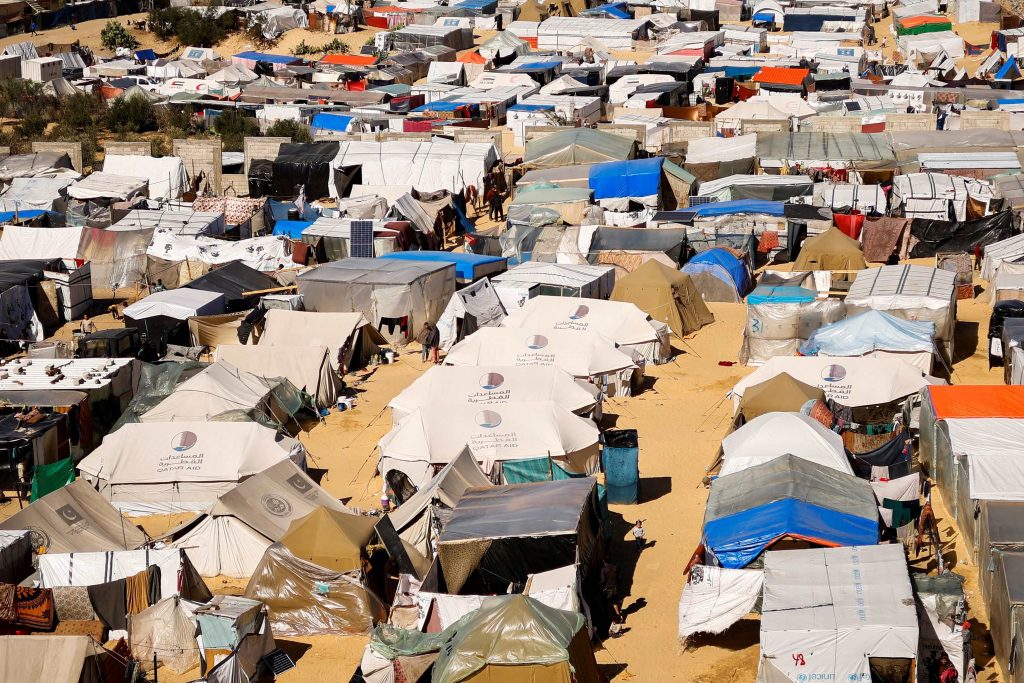
Displaced Palestinians, who fled their houses due to Israeli strikes, shelter at a tent camp, amid the ongoing conflict between Israel and the Palestinian Islamist group Hamas, in Rafah in the southern Gaza Strip, February 29, 2024. REUTERS/Ibraheem Abu Mustafa
Colleagues at the aid group reported a constant flow of people moving north Thursday, especially along Gaza’s Mediterranean coastal road, she said. Many people had already been displaced multiple times.
The reports from Al-Mawasi, which was holding about 450,000 people before this week’s evacuations began, are that it is already overcrowded. There is no space in between tents for sanitary infrastructure or to prevent the spread of fire should one break out.
There aren’t enough toilets or showers, said Dr. Amjad Alanqar, a physician-in-training from the Shujaiya district of Gaza City. He said he moved his family of around 20 people to Al-Mawasi on Thursday night after completing a full day’s shift at the intensive-care unit of a major Rafah hospital, where he returned on Friday to keep treating patients for burns and traumatic injuries from the bombardment.
It was the fifth or sixth time that Alanqar’s family had moved since the war began in October. He had been living most recently with his mother, his wife, his 18-month-old daughter and other relatives in an eastern Rafah neighborhood that the Israeli military ordered to evacuate.
He found a small bus that charged them more than $200 for a trip that usually costs about $25, piling their belongings inside and on the roof. They now live in two tents by the sea.
“People are showing up and finding that there’s no place for them,” Low said. “There’s no order whatsoever.”
Write to Stephen Kalin at stephen.kalin@wsj.com
